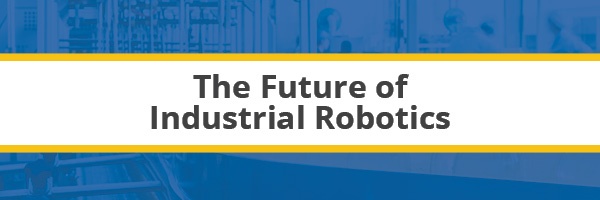
Industrial Robotics is a well-established field within the manufacturing sector for the past thirty years, employed for a variety of tasks like stacking, sorting, casting, welding, etc. Robots are involved within industries as they are able to perform hazardous, repetitive tasks more accurately and economically than humans. But still, in reality robots have a long way to go before they can be assigned intelligent tasks that require reasoning.
When talking about industrial robots, three aspects must be considered:
- Brawn: the strength that relates the physical payload a robot can carry
- Bone: the physical structure of a robot
- Brain: the level of intelligence it possesses
The number of industrial robots today are somewhere near 1,000,000, almost half of them being in Japan, and 15% in the US. The automobile industry remains the primary user of robot technology, but with latest developments in technology labs, energy houses, hospitals and other manufacturing industries aren’t far away from adopting the trend.
Starting off, the future of industrial robotics holds easily deployable & maintainable technology. The automobile industry has been using robots for decades but even for them, programming & managing robots poses a challenge. Robots of the future are bound to be low-maintenance as the constant need of highly skilled workforce to operate them is a major turndown for manufacturers. The change towards easily deployable, operable and maintainable has already kicked off with Visual Offline Programming which has simplified the design & commissioning phase of a robot. This, combined with off-the-shelf plug & play hardware modules has made robotics a major attraction for all kinds of industries.
Next, robots of the future will be more intelligent. But what is meant by being intelligent? Artificial Intelligence is already a hot topic of research and several breakthroughs have been made in the field. However, when viewed from an industry’s point of view, a more intelligent robot would be able to sense & predict changes and appropriately adjust itself. A robot’s ability to program itself is highly imperative, and so is human-robot collaboration. It’s true that robots are required to carry out often dangerous & repetitive tasks, but the trend is already changing. A more intelligent robot means more complex tasks can be solved, which in turn means constant human inputs. A robot should therefore be flexible enough to reproduce human dexterity and mitigate risks before disaster strikes.
Furthermore, human-robot collaboration also means a human should be able to work in robotic environment without any safety issues. Dual-arm robots are already being introduced which are safe for humans to work around, however work still needs to be done with mobile units, as worker safety is always the number one priority.
Finally, a robot of the future will be highly connected. The concepts introduced by Industry 4.0 like IoT can make robots highly powerful by providing them with a network of robots to communicate with. This means that apart from human-robot collaboration, robots of the future would be able to communicate with each other and issue a synergetic response to any change in parameters within the industry. Such changes would truly make a human’s job repetitive, and reserved only for emergency cases.



.png?width=669&name=Photography%20Email%20Header%20(2).png)
